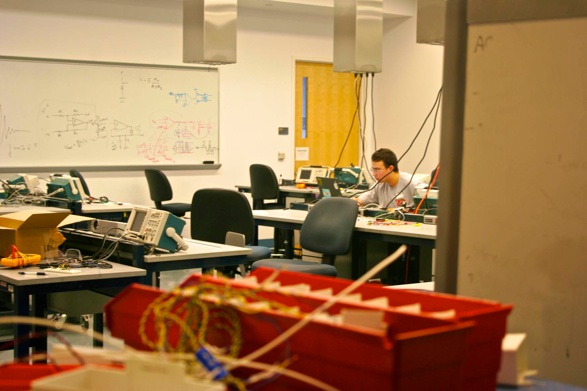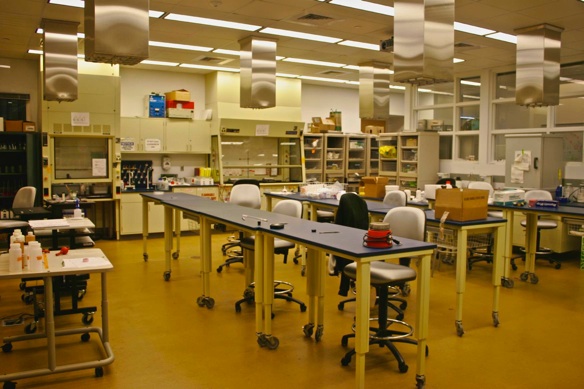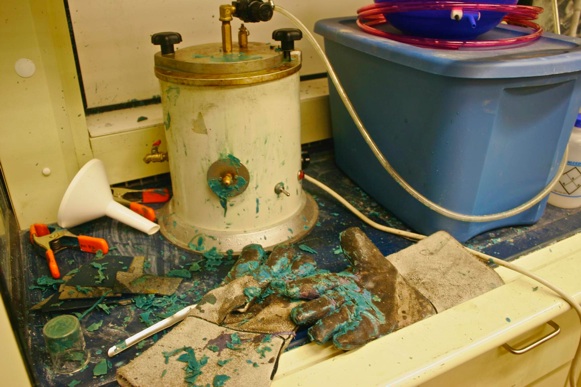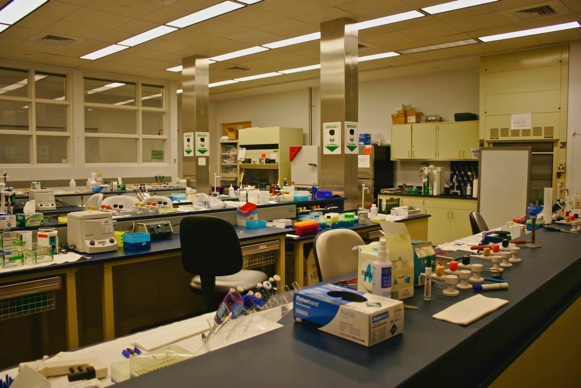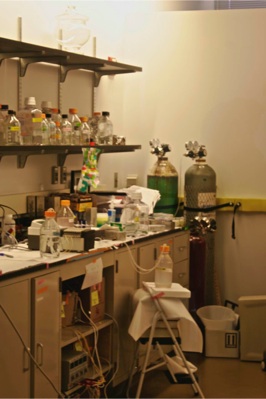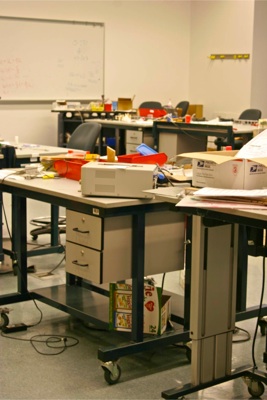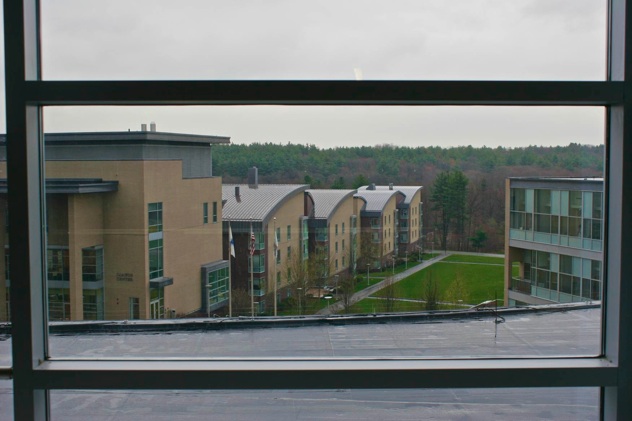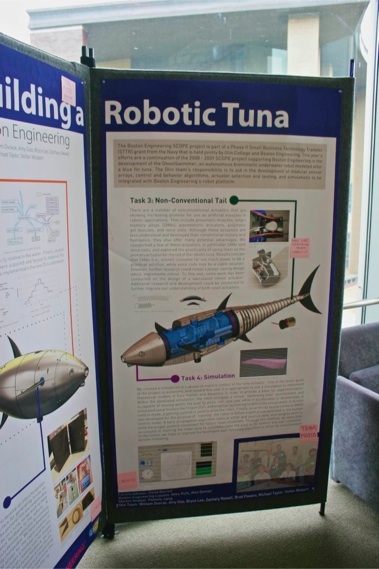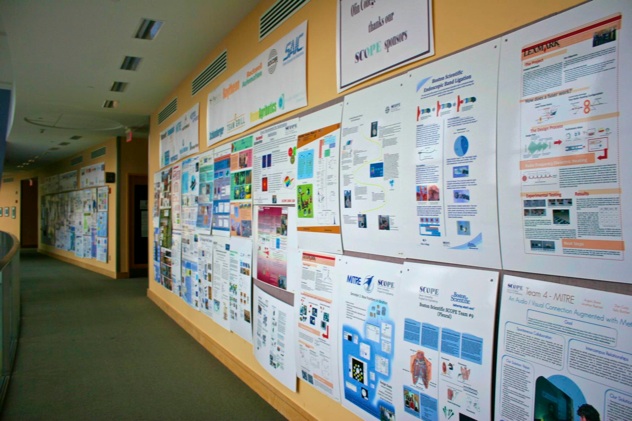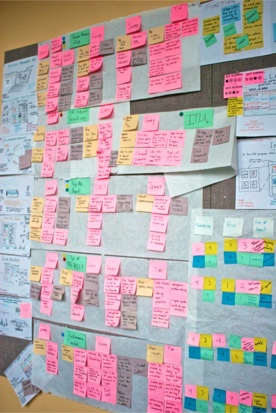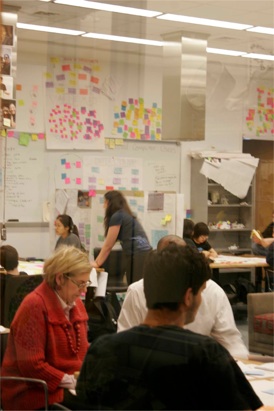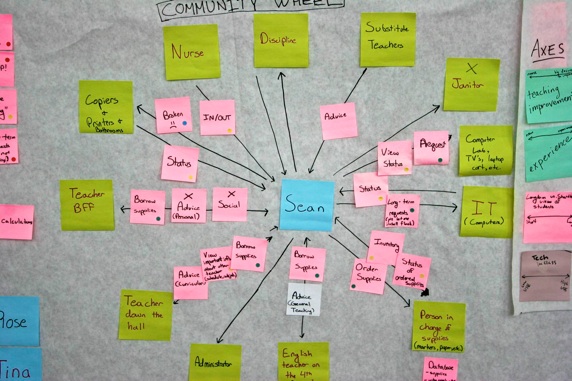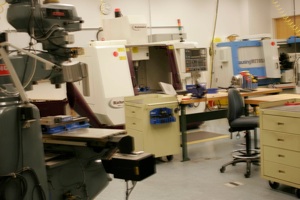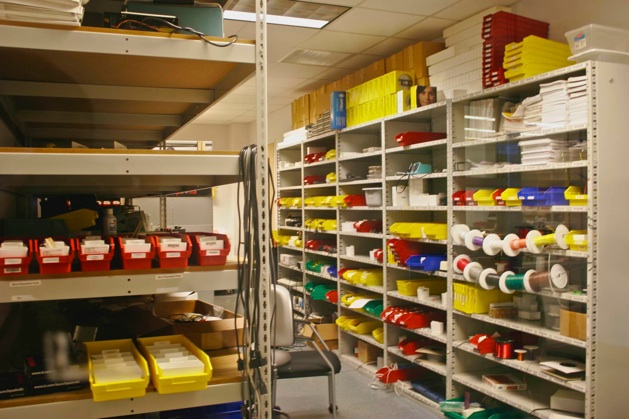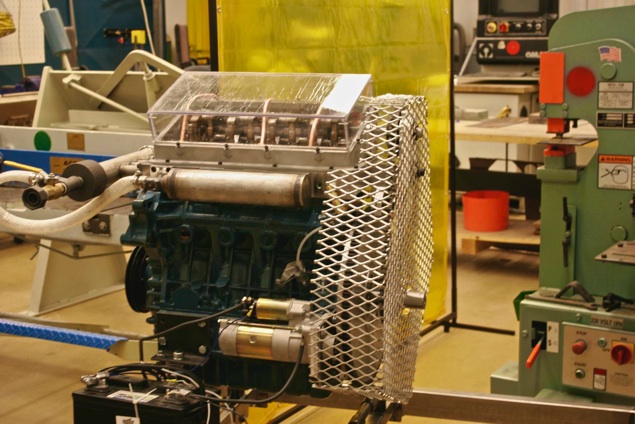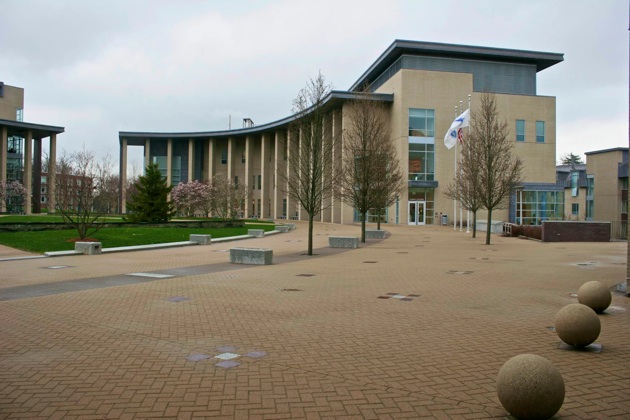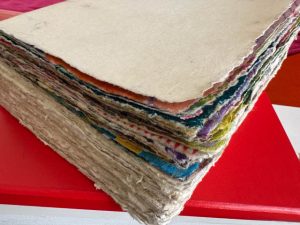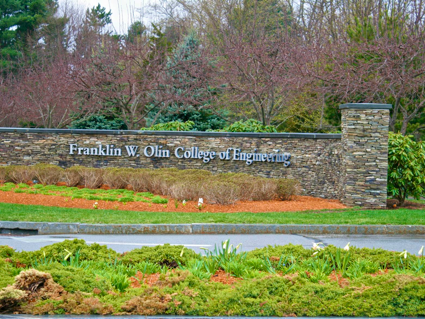
Today we visited Franklin W. Olin College of Engineering (click here). This is my son’s dream engineering school, but it is also tiny, elite and very difficult to get into. This is a school especially designed to be a creative, innovative, hands-on engineering school. It is young, built in 1997 to respond to a dearth of fresh thinking in engineering education.
I can testify: my engineering experience in the early 80’s at the University of Michigan was so dry it was brittle, and it’s shattered shards were not very useful, let alone inspiring. At the time, I was fond of saying that I could design a better engineering school. It would include lots of labs and real world experience, have contact with professors who had actually worked in industry, and far fewer foreign students so language and cultural divide was not an impediment to working on teams. Olin has responded to all of these issues just like I wished someone would.
There is no applying early to this school, and their admissions process is different than most. After collecting the applications in early January, they select 210 of the best students to come for a weekend to be put on teams and evaluated while in action. Each one is also interviewed by a panel of judges as well. From this, they pick 89 to make up their freshman class, and twenty for a wait-list, who if not offered a spot, are guaranteed a spot after a gap year (a deal they all accept!)
This is a school kids turn down MIT, Stamford, Caltech and Harvard to attend. Their baseline to get in is nearly perfect test scores. The gentleman in admissions quipped that those exceptional test scores were the shabbiest aspect on the admitted student’s applications. All their students were off the charts in some way or another.
Classes are different here. There is a photo below of robotic fish. The students study how a fish moves and then have to build one. If their fish gets all the way across the pool, they get an automatic A in the class. In the senior year there are especially big projects where they work in tandem with an outside company to solve a problem. They are expected to begin a start-up company designed to make a profit, all proceeds of which go to their favorite charity. Students also can take liberal arts classes at nearby Wellesley, and there is an intriguing study abroad program also, so there is more versatility in the program than with most engineering schools.
Olin graduates are (without exception, it seems) doing amazing things. Our baby-faced tour guide, who was a senior, is headed to a peach job as a project manager at Google, right out of college. Their first graduating class was in 2006 and already 7 of their students have been awarded Fulbright scholarships. Many end up in the best grad schools, go to work for Microsoft or iRobot, or become cutting edge entrepreneurs.


